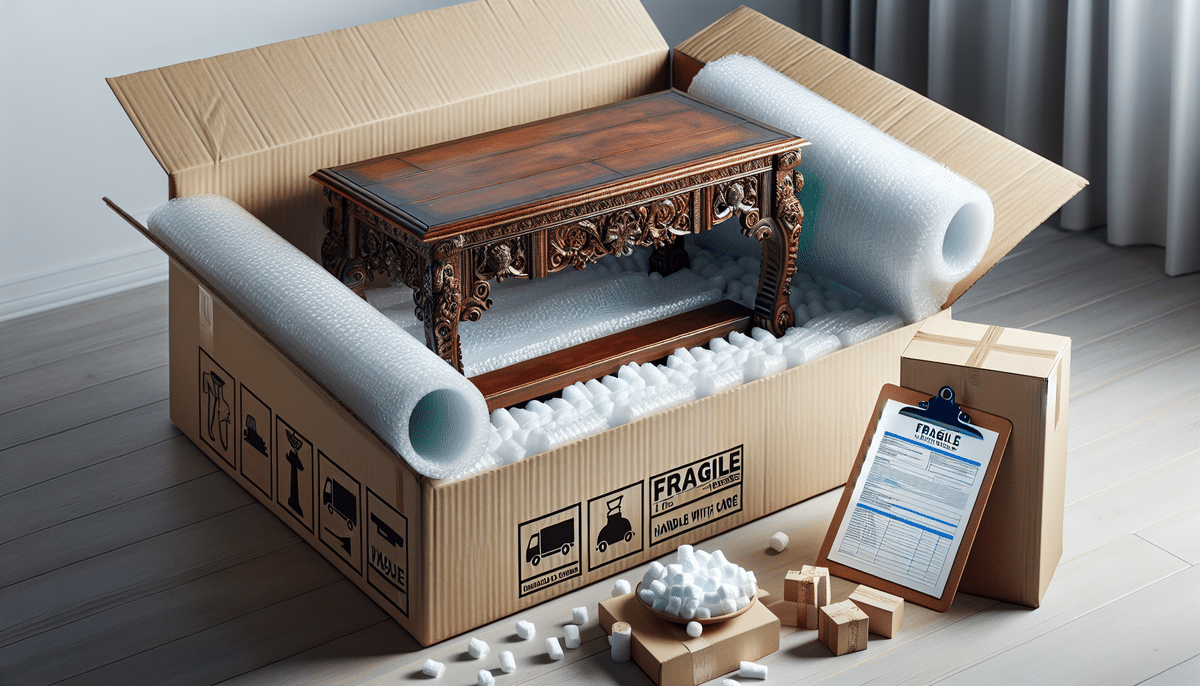Importance of Proper Shipping for Antiques and Collectibles
Shipping antiques and collectibles requires meticulous attention to ensure the preservation and protection of valuable items. Proper shipping practices not only safeguard your items but also maintain their market value.
Why Proper Shipping Matters
Whether you're shipping a one-of-a-kind antique or a rare collectible, proper shipping is essential to preserving your item's integrity. Damage or loss during transit can significantly decrease an item's worth and sentimental value. According to the American Antiques and Collectibles Association, properly packaged items have a 30% higher chance of arriving safely.
Risks of Shipping Fragile Items
Fragile antiques and collectibles are susceptible to various risks during shipping, including:
- Physical Damage: Items can be crushed, shattered, or scratched.
- Environmental Damage: Exposure to extreme temperatures or humidity can deteriorate materials.
- Theft: High-value items may attract unwanted attention.
Implementing robust packaging and choosing reputable carriers are crucial steps in mitigating these risks.
The Importance of Insurance
Insuring your items is critical for protecting against potential loss or damage. According to Fianna Insurance, over 20% of antique shipments experience some form of damage or loss. Ensure that you insure your items for their full value to secure financial protection.
Selecting the Right Shipping Carrier and Packaging
Choosing the appropriate shipping carrier and packaging materials is vital for the safe transport of antiques and collectibles.
Choosing the Right Shipping Carrier
Select a carrier experienced in handling delicate and valuable items. Companies like FedEx and UPS offer specialized services for fragile shipments, including additional insurance and tracking options.
Choosing the Right Packaging Materials
The selection of packaging materials should be based on the item's fragility, size, and weight. High-quality materials can prevent damage during transit:
- Bubble Wrap: Provides cushioning against shocks and impacts.
- Foam Inserts: Customizable to fit irregularly shaped items.
- Double-Walled Boxes: Offer extra protection for heavy or fragile items.
For oversized items, consider using pallets or custom crates to ensure stability during shipping.
Securing Your Items with Cushioning and Padding
Proper cushioning and padding are essential to keep your items stationary and absorb any shocks during transit. Use materials like:
- Packing Peanuts: Fill empty spaces to prevent movement.
- Air-Filled Bags: Offer adjustable cushioning around the item.
- Corner Protectors: Shield sharp edges from impacts.
Ensure that all gaps within the package are filled to minimize the risk of shifting.
Preparing Your Antiques and Collectibles for Shipment
Proper preparation is key to ensuring that your items arrive safely.
Packing Tips
Effective packing involves multiple layers of protection:
- Wrap each item individually in acid-free tissue paper or archival foam to prevent scratches and degradation.
- Double-box fragile items for additional security.
- Fill all empty spaces with cushioning materials to immobilize the item within the box.
Additionally, take high-resolution photos of each item from multiple angles before packing. This documentation can be invaluable in case of insurance claims.
Labeling Your Shipment
Proper labeling ensures that your shipment is handled with care:
- Mark boxes as Fragile and indicate the correct orientation (e.g., "This Side Up").
- Include both the sender's and recipient's addresses clearly.
- Add any special handling instructions, such as “Handle with Care” or “Do Not Stack.”
Secure labels firmly to prevent them from peeling off during transit.
Packaging Documentation
For valuable items, include a packing list and a description of each item's condition. This documentation facilitates smoother customs processing for international shipments and aids in accurate inventory.
Navigating International Shipping
Shipping antiques and collectibles internationally introduces additional challenges, primarily related to customs regulations and documentation.
Understanding Customs Regulations
Each country has its own set of regulations governing the import and export of antiques and cultural artifacts. It's essential to:
- Research the destination country's specific import restrictions.
- Obtain necessary permits or licenses for restricted items.
- Accurately complete customs declarations, detailing the item's value and origin.
Failing to comply with customs regulations can result in fines, delays, or confiscation of items. For detailed guidelines, refer to the U.S. Customs and Border Protection website.
Proper Packaging and Labeling for International Shipments
International shipments require robust packaging to withstand longer transit times and varying handling procedures. Additionally, clear labeling in the destination country's primary language can facilitate smoother processing.
Handling Issues with Shipments
Despite thorough preparation, issues like loss or damage can occur. Knowing how to handle these situations is crucial.
What to Do If Your Shipment is Lost or Damaged
If your shipment is lost or arrives damaged:
- Contact the shipping carrier immediately to report the issue.
- Provide all necessary documentation, including tracking numbers and photos of damaged items.
- File an insurance claim promptly, adhering to the carrier's specified time frames.
Maintaining a calm and detailed approach increases the likelihood of a successful resolution.
Tips for Receiving and Inspecting Your Shipment
Upon receiving your shipment:
- Inspect the package for any external damage or signs of tampering.
- Open the package carefully and verify that all items are present and undamaged.
- Document any discrepancies or damages immediately with photographs.
If issues are detected, notify the carrier and your insurance provider without delay to initiate the claims process.
Conclusion
Shipping antiques and collectibles requires careful planning and execution to ensure the safe and secure arrival of valuable items. By following these guidelines—choosing the right carrier, using appropriate packaging, understanding customs regulations, and knowing how to handle potential issues—you can protect your cherished possessions during transit. Always stay informed about the latest shipping practices and consider consulting with shipping professionals to enhance the safety of your shipments.




















